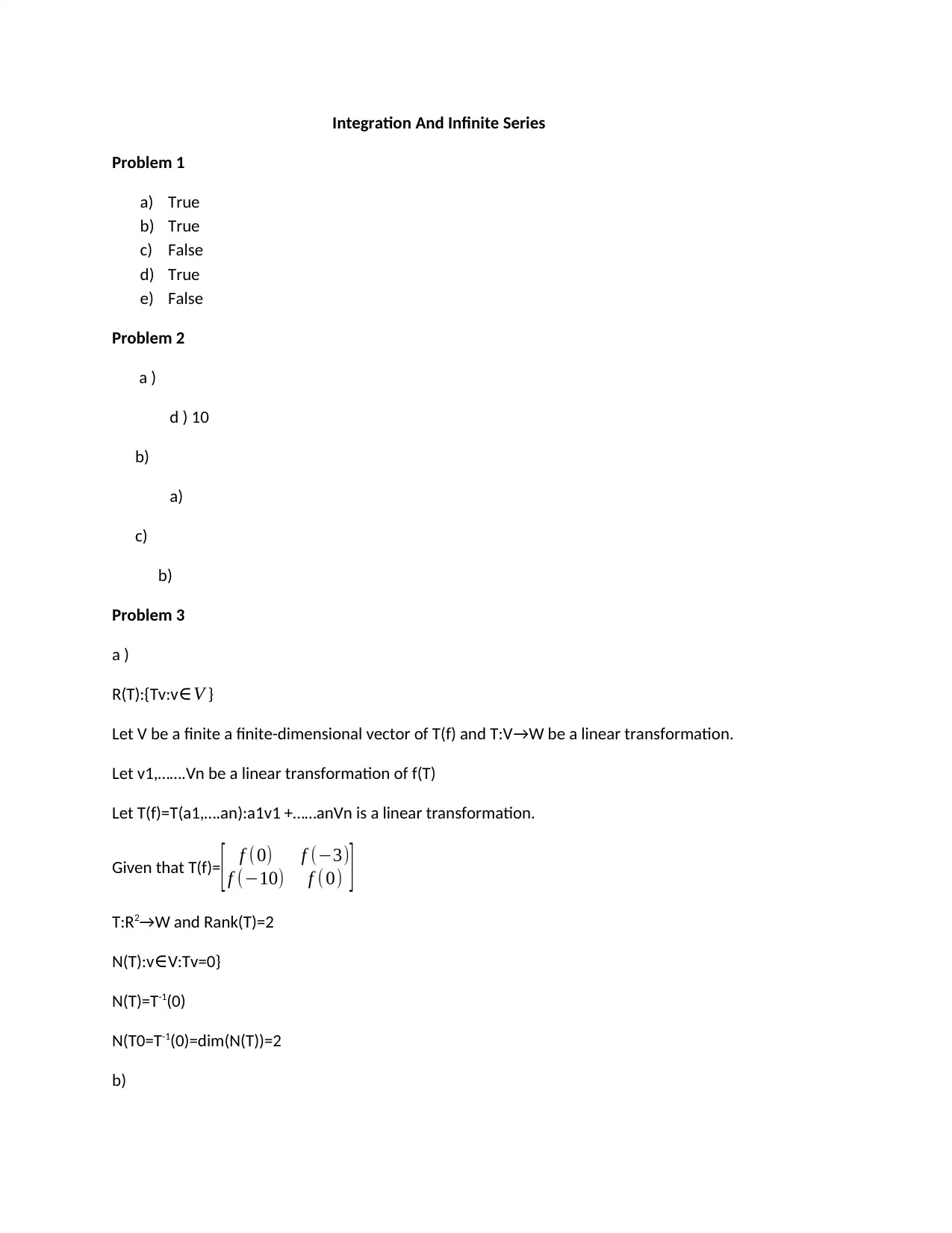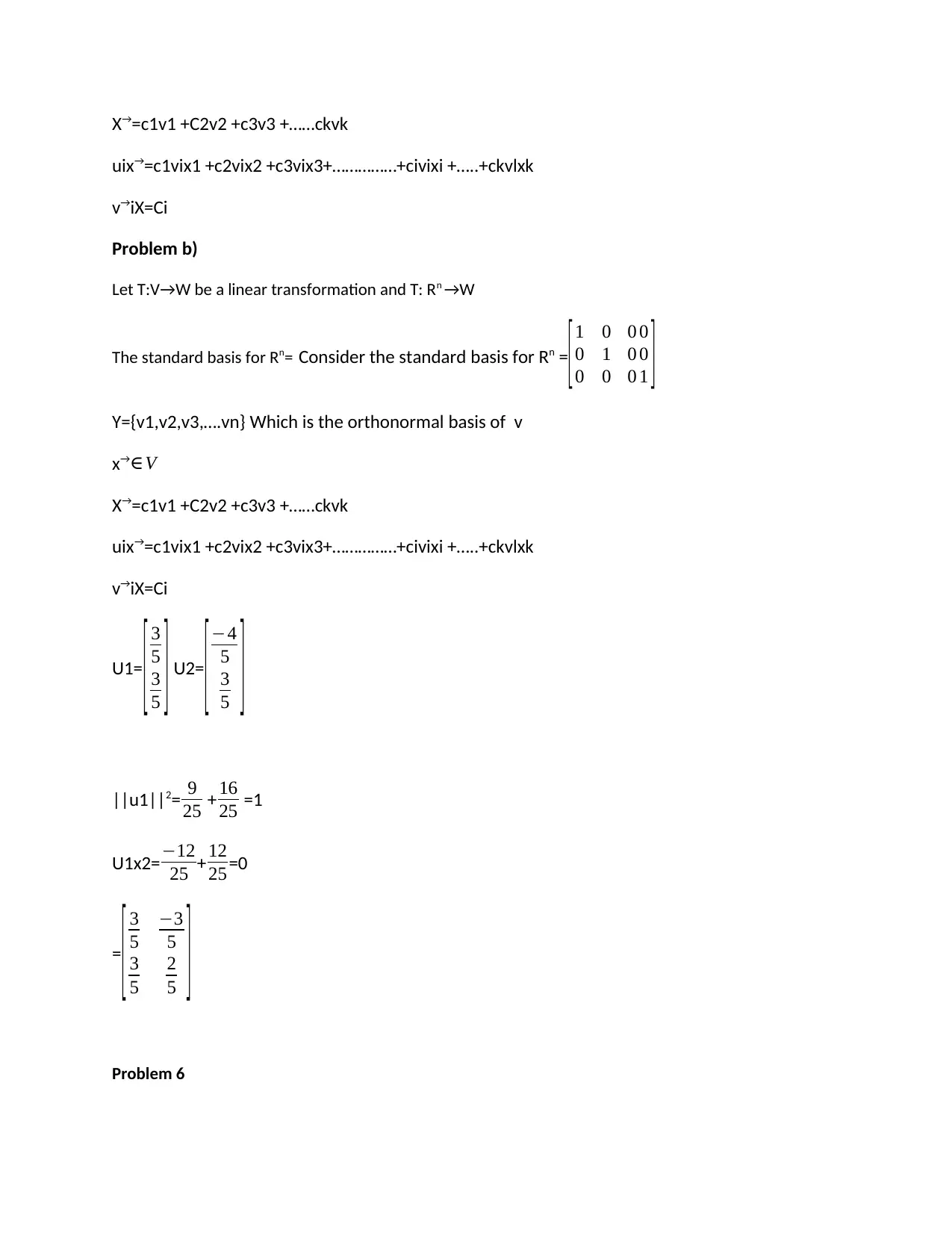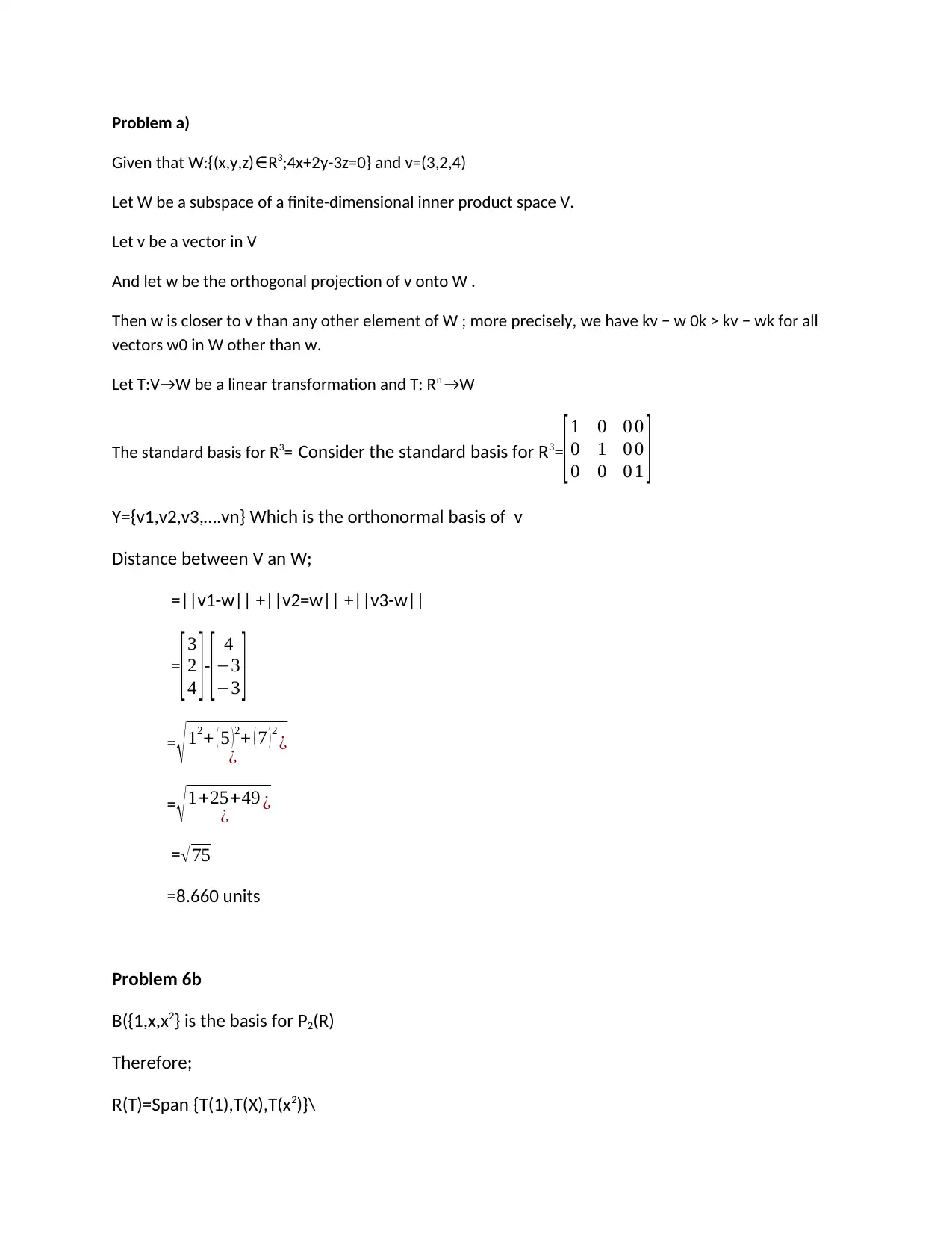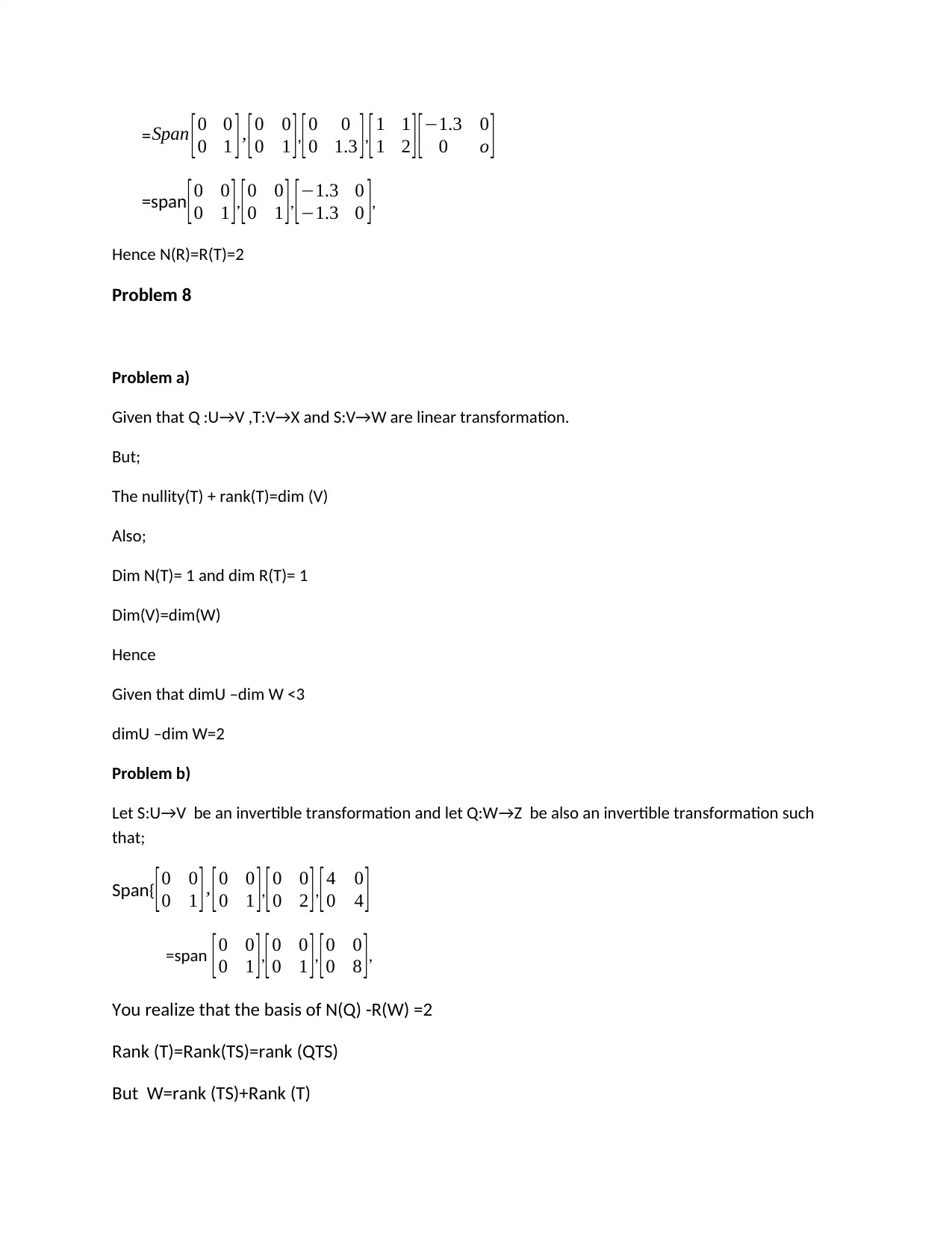Math 115A (UCLA) Final Exam Solution: Integration and Infinite Series
VerifiedAdded on 2022/08/26
|7
|960
|21
Homework Assignment
AI Summary
This document presents the solutions to the Math 115A final exam administered at UCLA on March 19, 2020, focusing on integration, infinite series, and linear algebra. The exam comprised eight problems, with a total of 90 points. The solutions cover a range of topics including true/false questions, vector spaces, linear transformations, rank and nullity, orthonormal bases, orthogonal projections, and related concepts. Each problem is addressed with detailed explanations and justifications, demonstrating the application of key linear algebra principles. The document provides a comprehensive breakdown of the exam questions, making it a valuable resource for students studying linear algebra and preparing for similar assessments. It includes step-by-step solutions, covering topics like linear transformations, vector spaces, and inner products.
1 out of 7













![[object Object]](/_next/static/media/star-bottom.7253800d.svg)